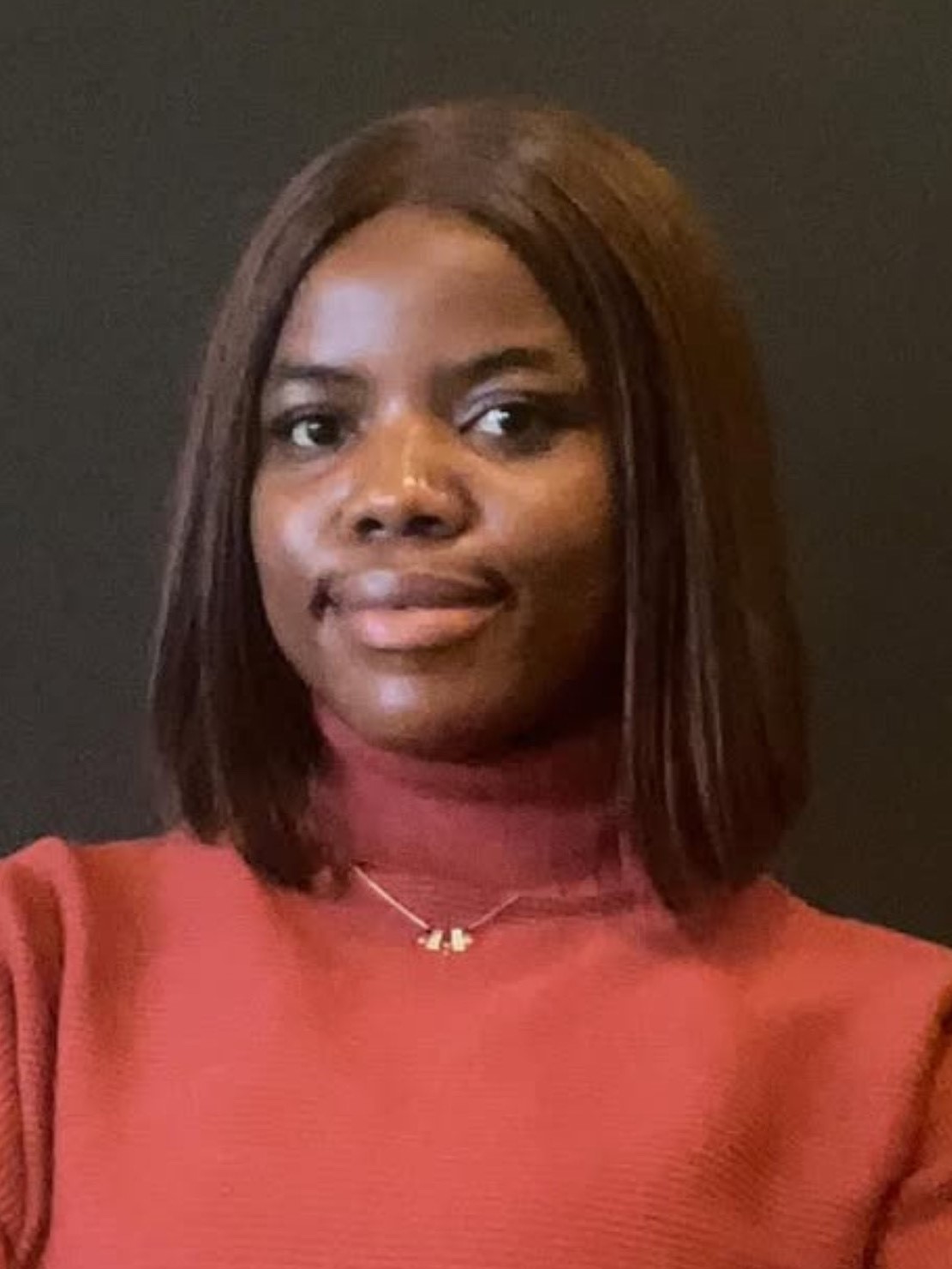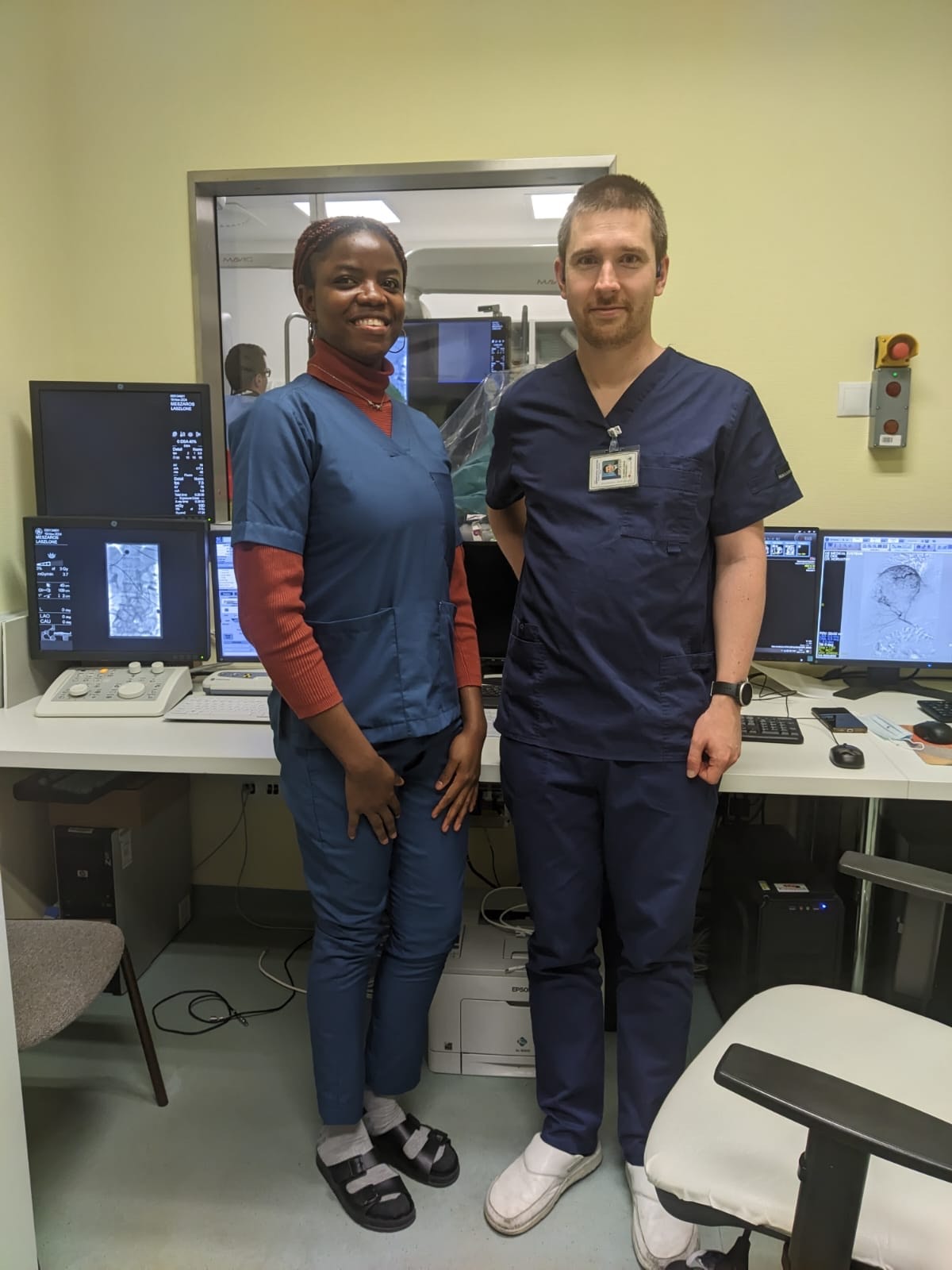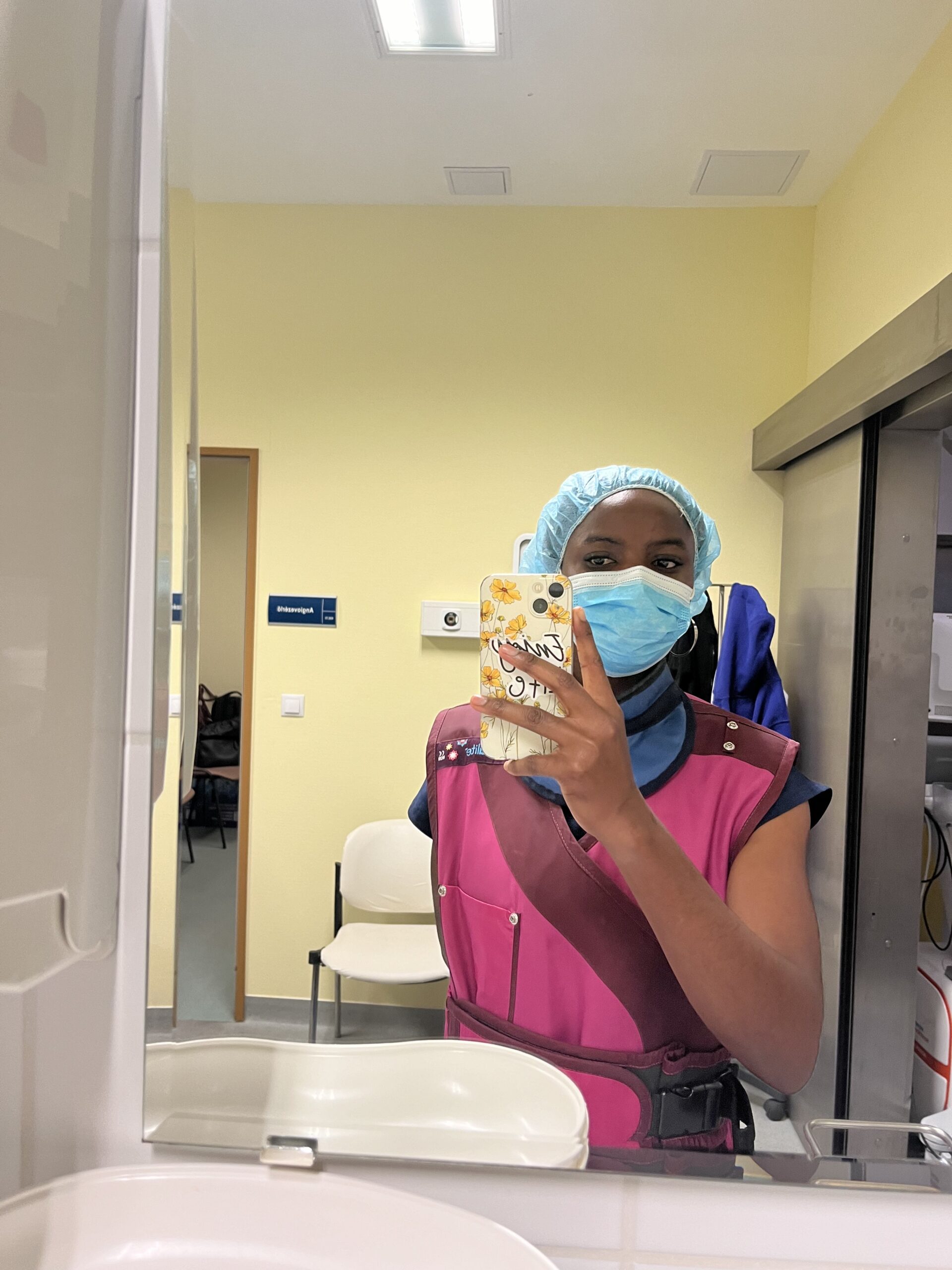Esther Oluwafeyisayo, a 5th year medical student at the University of Novi Sad, travelled to the Semmelweis University in Budapest, Hungary, to complete an internship.
A Day in the Interventional Radiology Department at Semmelweis University
Each day started at 08:00 with patient evaluations and case discussions, where the team reviewed imaging scans and procedural plans. Throughout the day, I had the opportunity to observe and understand the intricacies of image-guided interventions, witnessing how precise techniques can offer life-saving treatments with minimal recovery time.



